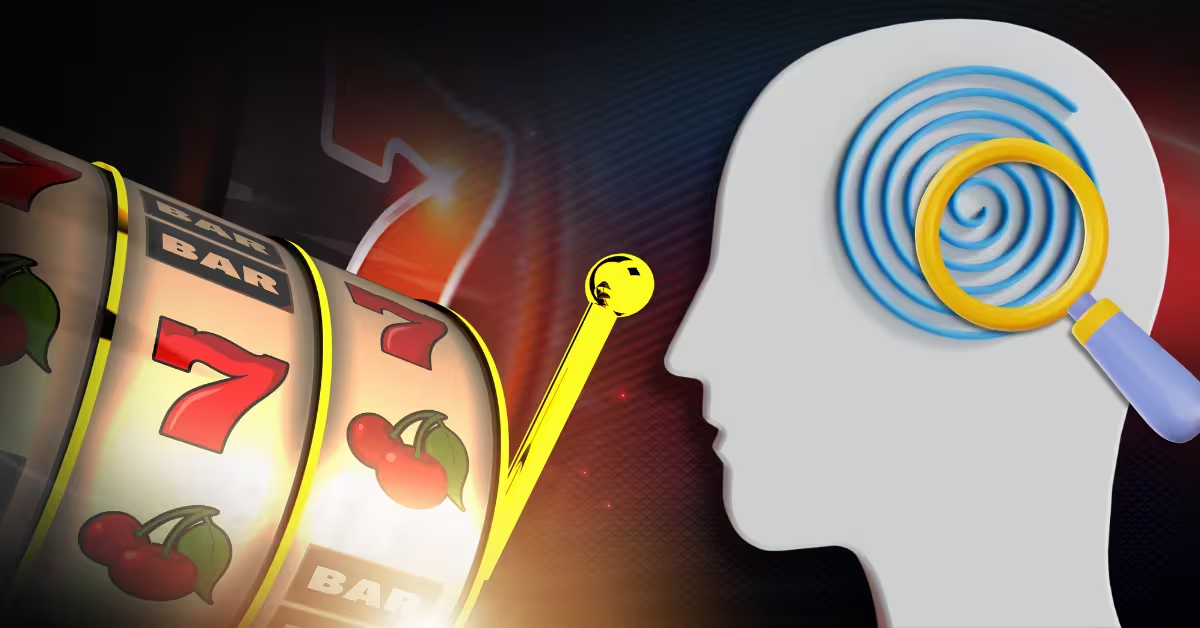Exploring the Psychology Behind Slot Machine Design

Slot machines are such a popular form of gambling in the United States and across the world that you’ll find the vast majority of gaming found in both land-based and online casinos are slot machines, well-loved for their bright colors, engaging gameplay, and a few design elements that make them enticing to play. There’s no denying that slot machines are a dominant force due to their appealing aspects and ease of play.
So, why are slot machines so engaging — and sometimes addictive?
This guide on slot machine design will explore the psychological principles intentionally embedded in slot game design, providing a clearer understanding of how they work and how to play responsibly. Don’t let the addictive elements of slot machines derail you from enjoying them for the leisure they offer!
The Basics of Slot Machine Mechanics
What are the elements that make up real-world and online slot machines? Check out the basics of slot machines and how they produce completely random results for the gamblers every time they spin the reels. For the time being, we’ll be addressing physical slot machines that incorporate digital components, such as random number generators (RNGs) and touch screens.

- Reels—This element of the slot machine is what a lot of people picture when they think about playing slots. They’re the spinning part of the machine that displays the symbols, which ultimately determine the outcome of each spin. Gamblers must form winning combinations to win a payout (all based on the slot’s individual paytable).
- Paylines—The line across the reels where the symbols land and must match up to trigger a win for the gambler. Winning combinations on the payline result in a payout, and these can come in various forms, such as diagonal or zigzag patterns or basic horizontal line configurations.
- RNG (Random Number Generator)—To ensure fairness, real-world and online slot machines carry small computer chips that generate random results every time a gambler spins the slot’s reels. The random number generator picks a number every time the player presses spin, and the number links to a random outcome based on the game’s rules.
In addition to the modern digital evolution of physical slot machines, which now feature crisp digital displays and incorporate random number generation, online and app-based slots have become legal in multiple states across the country within the last five to seven years. Many of these slot apps can be played on a home computer or a smartphone or tablet, making slot machines more accessible than ever.
Simple, Yet Complex
When you think about slot machines and how they work, you’ll notice that the gameplay is simple. The steps aren’t at all complicated:
- If you’re dealing with a real machine, you insert your money, or you place your bet digitally when using an online digital slot.
- Then, you pull the lever on a real machine or press the “Spin” button to get the reels moving.
- After this, you wait for the symbols to align on the payline, and you win money when you form a winning combination (it’s all determined by luck).
Despite the simplicity of how slot machines work, there is an underlying psychological complexity that’s often masked by their straightforward gameplay. Slots are engineered to be engaging for players, which can lead some to become addicted to playing them if they aren’t careful. For instance, the unpredictability of slots and the chance of winning at any moment keep many gamblers in a state of intense anticipation.
The Role of Reinforcement and Reward Systems
Slot machines can be addicting to play even if you go into using them with every intention of gambling responsibly. This is due to slot machines being designed to be highly engaging through elements that reinforce user behaviors and reward systems that encourage players to return repeatedly.
It’s possible to play slots and do so without slipping into a gambling problem or addiction. Still, the enticing way that slot machines operate can present challenges for gamblers who aren’t mentally prepared. This section of our guide will cover how slots are designed and how they significantly boost user engagement.
Operant Conditioning and Variable Rewards
Slot machines operate on a variable-ratio schedule, a method that keeps players fully engaged in gameplay through intermittent reinforcement. This is another way of saying that slot machines payout rewards at different time intervals, making them very difficult to predict. This can keep players completely engaged as they spin the reels, anticipating that a win could be just around the corner.
Over time, playing slots that deliver small, unpredictable wins can condition continued play with online and in-person gamblers. If you’ve ever heard of the “Skinner Box,” you’ll know that these tests showed how behavior can be modified through punishment or reinforcement. These results have been demonstrated in animal behavior, and they are also applicable to human beings, particularly when they are playing slots.

Near Miss Effect
Another element of rewards-based reinforcement in slot machine design is the “near miss effect,” where near wins can stimulate the brain in a similar way to actual wins. Nearly winning on the reels can activate the brain’s reward pathways and trigger a release of dopamine that can have as significant an impact as a real win might have. A near miss can be a pleasurable sensation, and this encourages the gambler to continue spinning the reels to experience a real win.
Near Miss Example: Two jackpot symbols and one just above the payline
Visual and Auditory Stimuli: Sensory Manipulation
Not only do slot machines have a reward system and intermittent reinforcement elements that keep gamblers hooked on spinning the reels, but then there’s also the appeal of how the slot machines look. Real-world and online slot machines are a lot of fun, especially with their bright colors and excellent sound design, which create an air of excitement and anticipation. Visual and auditory stimulation are key elements of slots, as you’ll soon see!
Colors and Animation
The use of bright colors and celebratory lights triggered by wins are design elements that enhance the overall gaming experience and make slots highly attractive for gamblers to play. You’ll also see that many slot machines come in themes that cater to different gamblers and their interests, which can deliver a more personalized experience. Themes can also evoke excitement and add variety to the gameplay.
Sound Design
In addition to visual enticement, slot machines often feature impressive sound effects, including winning chimes, the sound of reels spinning, and even coin sounds triggered by the player, whether using an online slot. Sound design is one of the more subtle elements of the slot, which could lead to future problems without many people realizing it at face value.
To understand the extent to which the slot machine’s design elements are curated for maximum engagement, these sound effects are not only used for big payouts but also for small payouts, which fuels the reinforcement process. You can consider the inclusion of the sound effects for small wins as “losses disguised as wins” (LDWs) —the sound cues can be misleading and enforce the reward mechanism further.
Slot Machine Design Techniques That Encourage Prolonged Play
Now, let’s take a look at the games themselves and some of the techniques used to keep gamblers in a state of prolonged play. Much of what you see with slot machines is their ability to make it seem like you’re winning more often, even though it’s smaller amounts, and some of the features or themes that give gamblers a higher sense of ownership over the slot than is really the case.

The Illusion of Control
When you look at a slot machine, you’ll see that there are a bunch of elements when the player can act, like pressing buttons to activate the spins, the ability to stop the reels, or accessing bonus games—these can all go toward giving players a false sense of “influence” on the outcome of the game. Slots can provide the illusion of control, but the ultimate outcomes are very much out of the player’s hands due to design features like the random number generator.
Personalization and Theming
Slot machines can provide a sense of familiarity or comfort, as many are designed around favorite movies, celebrities, or cultural icons. It can make you feel like you’re on familiar ground, which can cause you to let your guard down regarding the negative impacts that excessive play could have on your mental state or finances.
The impact of personalization and theming on slot machines is that these designs can tap into player identity and emotional triggers, which encourage them to become invested in the game to a certain extent.
Multiline Betting and Minuscule Wins
Slot machines come with an interesting feature that spreads bets across multiple lines, giving the player the perception of a high win frequency. Players will technically be winning less, but the frequency of how the wins are staggered across the betting session can give them the idea that they’re winning more, which encourages more engagement. It’s a sensory feature of slot machines that’s yet another element that keeps players spinning the reels.
Mobile and Online Slot Psychology
Since the introduction of slot machine apps and online casino apps that offer constant access to players, it has never been easier for people to join, enter their banking information, and start playing online slots for real money. While convenient, this constant access via computer or mobile app can pose a problem for some people, especially if they already have issues with compulsion.
- Portability—The blessing of having access to slot apps is that they are highly convenient and can save you a lot in terms of time or money spent getting to the nearest casino or gambling establishment. However, constant access can quickly fill a problem or addiction if there aren’t any accountability mechanisms in place.
- Push Notifications and “Bonus Reminders”—These alerts and notifications can be helpful in that they help you stay on top of bonuses and other promos being offered. Still, these, too, can fuel a compulsion to continually return to the app and spin the reels once more.
- Freemium Mechanics and In-App Purchases—Many online slot games or apps allow you to play for free. Still, they will offer optional in-app purchases, which offer a more enhanced experience or faster handling. The offering of a free experience can quickly become useless once players feel compelled to opt for upgrades that can be purchased conveniently in-app.
The Ethical Debate: Manipulation vs. Entertainment
Are these techniques engaging or exploitative? It can be easy to jump to the conclusion that these apps are simply tapping into people’s psychology and offering products that satisfy dopamine and reward systems through conditioning techniques. However, when you delve deeper into the matter, you see that many slot apps are subject to regulations by licensing bodies that work towards a fair design and gaming practices, which include elements such as return-to-player (RTP) disclosures and limits on spins.
In addition, emerging design standards from responsible gaming organizations aim to provide a more accountable gaming experience or at least facilitate an environment where gamblers are more likely to exercise restraint.
How to Stay Aware and In Control
While gamblers are bound to make mistakes here and there when playing slot machines, there are some practices they can use in their gambling routines to increase their level of awareness and exercise more control over how they play. Once you know the manipulative cues of slot machines and learn the ways you can play mindfully, you can have a more enjoyable experience without being subtly seduced by the tricks these machines try to pull on gamblers who don’t know any better.
- Tips for Mindful Play—Impose time limits on your gambling sessions to limit the time spent playing slots over time. Also, go into each session with a budget in mind, money that you can afford to lose without affecting your finances negatively.
- Recognizing Manipulative Design Cues—If you haven’t read through this entire guide, we’d encourage you to do so to get familiar with some of the design elements of slot machines that could feed a gambling problem or addiction.
- Accountability Tools—Take advantage of the accountability mechanisms that are available in the online gambling world, like self-exclusion lists, deposit limits, and other responsible gambling features, to ensure you don’t slip into further problems with gambling.
Final Thoughts on Slot Machine Design
When you begin playing slot machines in real life or online slot games, it’s essential to be informed, play smart, and enjoy responsibly. The more addictive elements that slot designers use to make their games as appealing and engaging as possible (be they for good or bad intentions) can get the better of some gamblers if they aren’t careful.
Remember the manipulative design cues we’ve talked about in this guide the next time you go to play slots at your local land casino or with your mobile app:
- Apps themselves that offer convenience and 24/7 access
- Bright colors and celebratory lights following wins
- Excellent sound design
- Themes that get the player more invested in the slot
- Multiline betting, which offers the sensation of frequent wins
- Small wins frequently that can lead to the illusion of a high win rate




